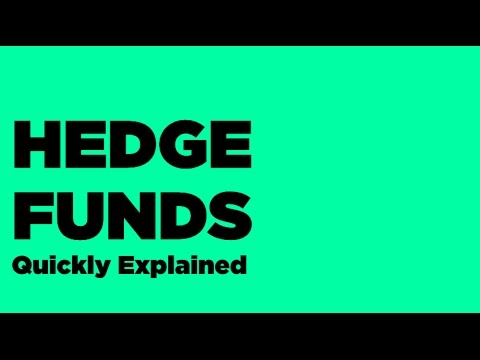Contents:


When the RSI rises above 70, it is considered overbought, and when it falls below 30, it is deemed oversold. If required, these conventional levels can be changed to better meet the security. If a security is consistently approaching the overbought threshold of 70, for example, you might wish to raise it to 80. The RSI may linger in overbought or oversold territory for lengthy periods of time during strong movements. The Relative Strength Index is a widely used technical indicator that assists traders in identifying potential buy and sell entry points. It measures both the speed and the rate of change in market price fluctuations.
Here we shall not move deep into mathematical what is rsi of RSI because it is available in all charting software as an indicator where we can set period as our wish. Divide a stock’s trend price by the trending price of an index or a comparable stock to find its relative strength. Let’s now look at the orange line, which originated when RSI touched a low of 30. But the second time, though, prices moved marginally lower, RSI did not even touch the 30 marks. There was thus a clear case of divergence where the price moved higher but the RSI moved lower. Such cases point to an impending fall in prices going forward, which is visible in the second and third cases; though, in neither of them, RSI had touched the overbought level of 70.
Attention Investors:
Today we will learn about one of the most common and frequently used technical indicator calledRelative Strength Index or RSI Indicator. So first let’s take a quick look at what is a momentum indicator and then we will understand what is an RSI indicator. In this example we can see that several false signals were called during a downtrend and would have resulted in a loss if on had held on.
RSI to hire UNC students seeking medical, psychological experience – The Daily Tar Heel
RSI to hire UNC students seeking medical, psychological experience.
Posted: Thu, 20 Apr 2023 16:04:11 GMT [source]
In the chart above, there is only one incidence of the price touching the overbought level, though there are many occasions when fatigue is visible as the price reaches the 70 lines. Similarly, when a stock reaches a level of 70, traders either look to exit from their position or look for an opportunity to sell the stock short. Here the traders are looking for resistance or a pattern to confirm selling. If trading was all about buying a stock when it is oversold and selling when it is overbought everyone would have been rich beyond their wildest dreams. Though the rules of trading with an oscillator are simple there is a catch.
Bank Nifty Likely To Stay Neutral For The Next Trading Session
Pay 20% or “var + elm” whichever is higher as upfront margin of the transaction value to trade in cash market segment. The figure is further normalised using the above formula so as to ensure that it lies between 0 and 100. Wilder used the 14 day RSI, which is still the most commonly used RSI. However, an analyst is free to decide the number of days for computing the same.
A Relative Strength Indicator is known as a momentum indicator. One would then question the utility of such oscillators if they do not work all the time. Here is a moment of truth – no oscillator or trend indicator or trading strategy in the world ever developed works all the time.
No need to issue cheques by investors while subscribing to IPO. Just write the bank account number and sign in the application form to authorise your bank to make payment in case of allotment. No worries for refund as the money remains in investor’s account. Using RSI to Spot Overbought and Oversold Conditions In the Market. The relative Strength Index is a great way to assess stock market conditions. Low RSI refers to buy signals, and High RSI refers to sell signals .
Top 10 Most Expensive Stocks in India 2023
Another aspect to consider in the study of RSI indicators is the price divergence. It is the point of bend or a change in the direction of the price that can indicate the reversal of the trend. Divergence is the point where the price line and the RSI move in the opposite direction that can be identified as a potential change in the price trend.
Momentum indicators are technical analysis tools used to gauge the strength or weakness of a stock’s price. RSI measures the velocity of a stock’s directional price movement. Technical analysis is also the basis of analyzing the valuation of a stock along with the fundamental analysis.
Using smoothening techniques, we arrive at an RSI figure which is anywhere between 0 and 100. Welles Wilder and introduced in his 1978 book – ‘New Concepts in Technical Trading Systems’. Since then, it has become one of the most commonly used indicators for technical analysts and traders. Thankfully for traders, there is an oscillator that not only works well in a flat market but with a little tweaking, it can be a handy tool in a trending market too. The author has done a Bachelors in Banking and Insurance . Her goal is to help readers make better investment decisions.
But at the last point, when RSI breaks the 40 lower band, so does the price, making it the perfect space to short sell. Another plus point of RSI is that it could work in non-trending zones as well. This could work in favour of traders as most indicators work the best when the market is trending.
Trending Videos
Let’s dig into this technical analysis indicator that can help you determine strength or weakness of an asset’s price. The Relative Strength Index is a prominent technical indicator that helps traders identify possible buy entry opportunities and sell entry points ). Divergence signs of a likely forthcoming trend shift are also regularly monitored. One of the most prominent and extensively used momentum oscillators is the Relative Strength Index .

The divergences in the RSI and price chart can also give trade signals. Above is a price chart of Nifty 50 on a particular day. As we have discussed above, the same oscillates between zero and 100. You can see points 80 and 20 marked in the graph because they are deemed important in assessing overbought and oversold conditions. While there are many indicators that are in use to gauge overbought or oversold conditions, a relative strength index is one of the most used. Let us know about RSI in detail and see how you can form strategies around it.
RSI shows zero value when the Average Gain value equals zero. For example, on 14 days period, RSI zero is an indication that price movement has been lower for the period, and there is no gain to measure. In this chart, the RSI touches the 30 mark, the threshold of oversold zone and then rises to 40, the fail point. It then falls again but the fall is lower than the previous value of 30. Moreover, the RSI crosses the fail point to rise even higher thereby creating a bullish failure swing. It acts as a signal for a trader to go for a long position in the security.
Hence, you are requested to use following client bank accounts only for the purpose of dealings in your trading account with us. The details of these client bank accounts are also displayed by Stock Exchanges on their website under “Know/ Locate your Stock Broker”. The average time period we use for the RSI is the 14 period average. Let’s say in the last 14 days, there were 10 up days and 4 down days. We will take the average gain on the 10 days and divide it by 14 – then use the average loss of 4 days and divide it by 14.
Aayushi’s ability to break down financial jargon into easily digestible content sets her apart as a writer who truly understands the needs of her readers. RSI convergence is generally formed when the price is falling. It also indicates a reversal in trend, indicating that the price may soon rise . It is usually formed before the reversal can happen and therefore is an early signal generator. The resultant is a positive divergence when the higher lows of RSI are aligned with lower lows of the price, provided the RSI shows an oversold reading.
Free Stock Market Courses to Learn Everything About Investing and Trading
It is a momentum indicator which is the key strength of the price. RSI is therefore, directly proportional to the price, which means if the RSI increases, so does the price, and if the RSI decreases, so does the price. But this is completely opposite to overbought and oversold, and this is where the confusion lies, making it the misunderstood indicator. This blog is about the world’s most misunderstood Indicator. Relative Strength index is an Indicator that almost everyone uses.
A positive divergence is when the price line reflects a lower high and lower low as against the higher high and higher lows of the RSI. Traders use RSI to recognize oversold and overbought markets and decide on when to open a position. Investors are always trying to gain an edge over the market, and a popular way is to apply economic metrics to the stocks they like – before pulling the trigger and buying them. And one of the most effective market measurement metrics – is the Relative Strength Indicator. This divergence might signify a price reversal if underlying prices make a new high or low that isn’t verified by the RSI. A Top Swing Failure occurs when the RSI reaches a lower high followed by a downward move below a previous low.
In fact, RSI shows the strength of the stock is relative to a particular date or time period in the past. Please ensure you carefully read the risk Disclosure Document as prescribed by SEBI. Please ensure you carefully read the risk Disclosure Document as prescribed by SEBI/FMC. But sometimes, you might come across situations where the RSI has started to diverge from the stock price. If you are long on a stock, then the oversold region is an indicator that you should be careful while buying the stock.
In dull markets, when many traders would sit out, the oscillators give their followers a chance to make money. In this video Apurva has revealed his favorite trading strategy. He uses RSI divergences to identify important reversals on various timeframes. You will learn about contrarian trading with RSI divergences from the video.
- Let us take a deeper on the same and how certain combinations with other technical analysis tools could help your RSI trading strategy.
- In a strong downtrend, the RSI value tends to stay below 70 and frequently crosses 30.
- If these numbers sound familiar its because they are based off the standard of the MACD indicator, and can be either simple moving averages or…
- Like RSI, the concept of momentum oscillator was first introduced by J.
- While studying RSI, divergence is what you should be looking for.
Let us take a deeper on the same and how certain combinations with other technical analysis tools could help your RSI trading strategy. The Relative Strength Index , developed by J. Welles Wilder, is a momentum oscillator that measures the speed and change of price movements. Traditionally the RSI is considered overbought when above 70 and oversold when below 30.
ICICI Direct Research predicts that in May, the index could inch towards 18,300-18,500. All major sectoral indexes including IT stocks, public sector banks and media rose, but gains in financials were capped. Glenmark Life Sciences surged over 5%, while Wipro approved a buyback worth ₹12,000 crore. Domestic equities will be closed on May 1 for a public holiday. RSI indicator may stay in the overbought or oversold zone for a significant time and may not reflect a clear trend or reversal of the same. This time-lapse will not provide a clear direction for the trader to understand the price trend or the potential reversal of the same leading to wrong interpretations.
Stellar (XLM) Price Analysis: Will it Bounce Back in May? – BeInCrypto
Stellar (XLM) Price Analysis: Will it Bounce Back in May?.
Posted: Thu, 04 May 2023 10:45:00 GMT [source]
Slopes are an increasingly key concept in Technical Analysis. The most basic type is to calculate them on the prices, but also on technical indicators such as moving averages and the RSI. In technical analysis, you generally use the RSI to detect imminent reversal moves within a range. In the case of the Blue indicator, we are calculating the slope of the market…
Basically, it indicates the speed at which the price of a share changes. For example, suppose a stock is trading at Rs 1,000 on Monday. On Tuesday it moves to Rs 1,050 and to Rs 1,100 on Wednesday. This indicates that the stock has ahigh momentumas it has moved upward by 10% in just 2 days. A bearish divergence is observed when the price of an asset makes a higher high and RSI makes a lower high.
Hello, I’m a passionate trader who has spent years studying technical analysis and exploring different trading strategies. Through my research, I’ve come to realize that certain indicators are essential tools for conducting accurate market analysis and identifying profitable trading opportunities. In particular, I’ve found that the RSI, SRSI, MACD cross, and Di…